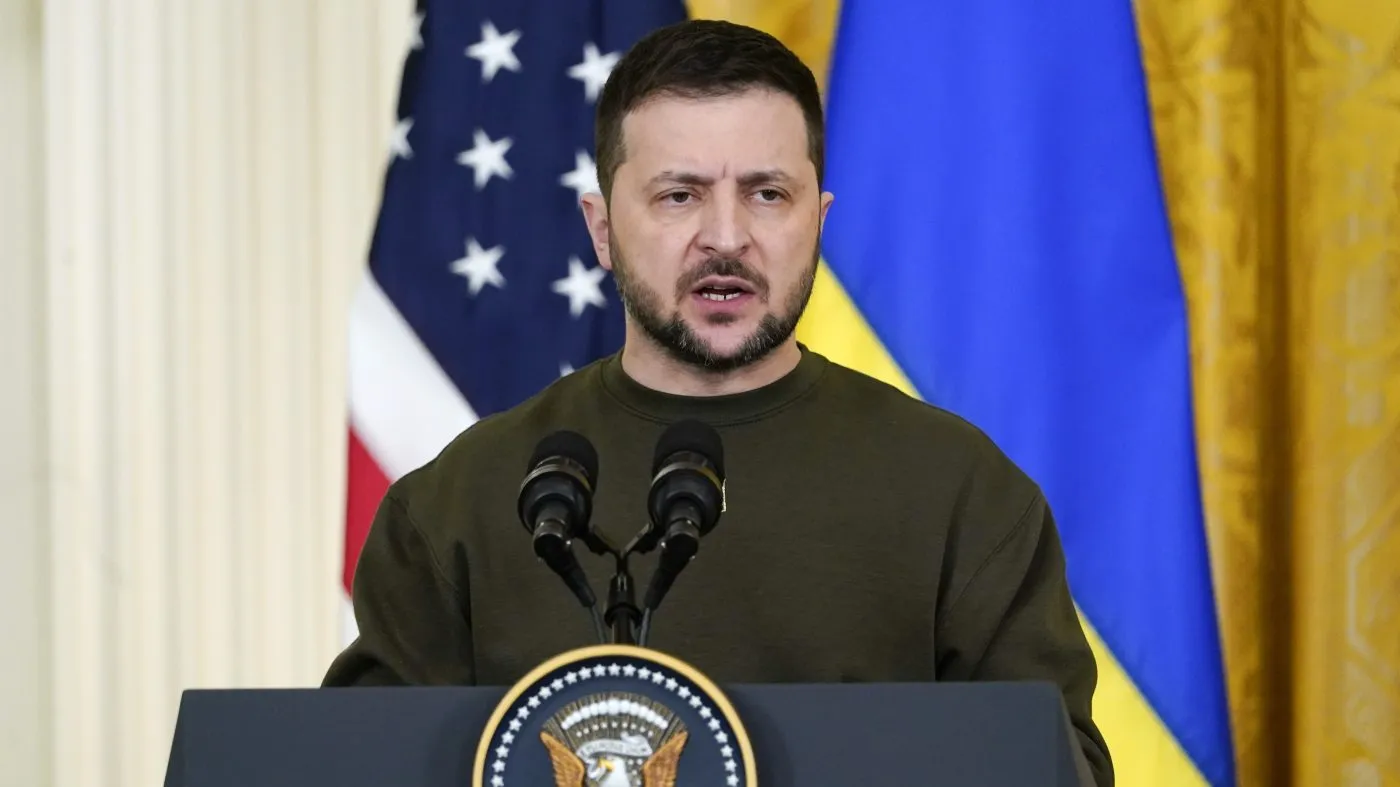Ukrainian President Volodmyr Zelensky’s recent visit to the United States was a pivotal moment in his ongoing efforts to secure international support for Ukraine’s struggle against Russian aggression. During his visit, Zelensky received assurances of support and air defense equipment from President Joe Biden. However, he also faced a challenging political landscape, with concerns about funding and ongoing Russian attacks.
Zelensky, recognized for his distinctive olive green military-style attire, held discussions with members of the US Congress and made stops at the Pentagon and the White House. At the White House, he was welcomed by an honor guard and met with President Biden in the Oval Office. Zelensky expressed his deep appreciation for the United States’ assistance in combating what he described as “Russian terror.”
Sitting beside President Biden, with portraits of George Washington and Abraham Lincoln as a backdrop, Zelensky also extended his gratitude to Congress for its substantial support. President Biden, in turn, commended the bravery of the Ukrainian people in their fight against Russia’s invasion and reaffirmed the commitment of the American people to stand with Ukraine.
However, amid these expressions of solidarity, there were underlying concerns. While the White House pledged to provide Ukraine with a “significant air defense capability,” no agreement was reached regarding the provision of the long-range missiles that Zelensky has been seeking.
Furthermore, in Congress, partisan disputes over spending cast a shadow over a proposed $24 billion aid package for Ukraine. A faction within the Republican Party, characterized by its hard-right stance, advocated for cutting off aid to Ukraine. This call came despite Congress having previously approved a substantial $100 billion in aid, including $43 billion allocated for weaponry.
Zelensky’s visit coincided with a new wave of Russian missile strikes across Ukraine, causing casualties and destruction. Senate Democratic leader Chuck Schumer revealed that Zelensky had conveyed the stark message that without aid, Ukraine risked losing the war.
In his efforts to build support, Zelensky visited the Pentagon, where he paid tribute to the victims of the September 11, 2001 attacks. While White House National Security Advisor Jake Sullivan expressed optimism about bipartisan support for continued funding for Ukraine, he disclosed that President Biden had deferred Zelensky’s request for longer-range ATACMS missiles capable of striking targets up to 300 kilometers away.
On Capitol Hill, Zelensky faced a more restrained reception from Republican Speaker of the House of Representatives, Kevin McCarthy, who grapples with internal party divisions over financial assistance to Ukraine.
The doubts surrounding further funding have been exacerbated by former President Donald Trump, a potential 2024 candidate, who opposes additional financial support and has expressed admiration for Russia’s Vladimir Putin. These sentiments have influenced some Republican senators, sparking debates about resource allocation and concerns about corruption in Ukraine.
Despite these challenges, Zelensky continues his diplomatic efforts to rally international support for Ukraine in the midst of the ongoing conflict with Russia. The world watches closely as Ukraine navigates these intricate political and military landscapes, seeking to secure the support necessary to defend its sovereignty and territorial integrity.




